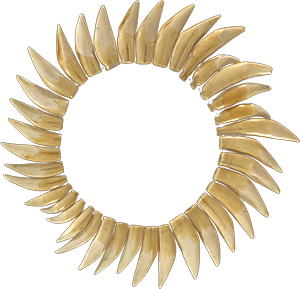Wiwa
There is another town that is also located in the lower part of the Sierra Nevada, to the south of the Guajira and some basins of Cesar. Due to the violence in the territory, there has been a displacement of the population towards the Jerez, Tapias and Guachaca Rivers.
At the moment the Wiwa people are going through a territorial conflict, about two years ago this ethnic group does not own a territory. The situation for this ethnic group is so worrisome that they are sheltered in a home of passage for Indians in the Department of Cesar; this has affected the development of the work traditionally done in their villages. Wiwa women are today domestic employees, men are day laborers and children attend makeshift schools.
In Wiwa mythology, it is said that this name is associated with heat, its native or mother tongue as Maria Trillos calls it Damana. These have a dress similar to the Kogui, the difference is that the Wiwa use the longer pants, exceeding the knees as is commonly used by the Kogui and wear a hat made of “cane” wings.
The Wiwa weave their backpacks in materials such as wool and sisal, the women use the sisal backpack and carry a red cloth, being a symbol associated with the Cathartes aura buzzard, an animal that represents a very special thought for women.

